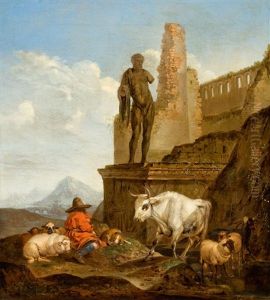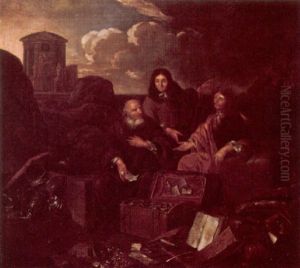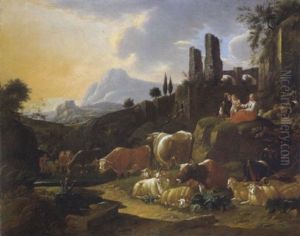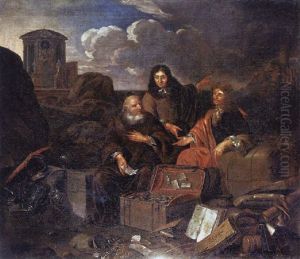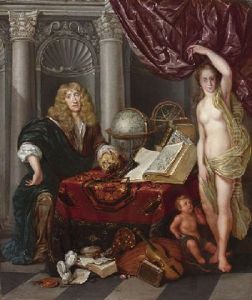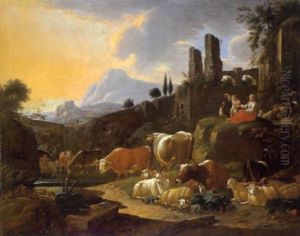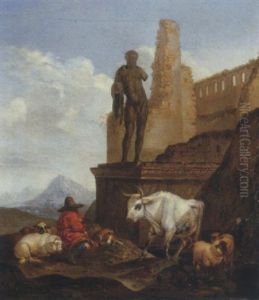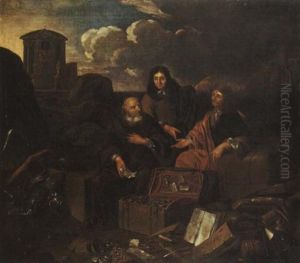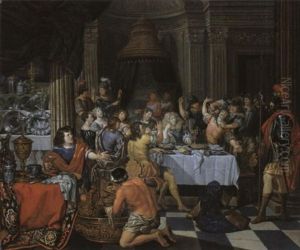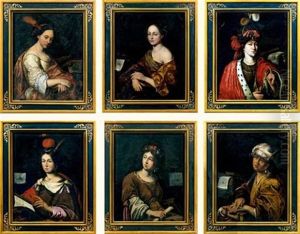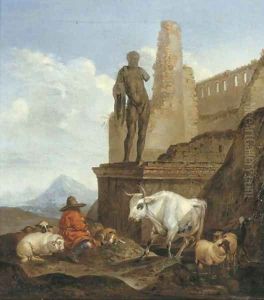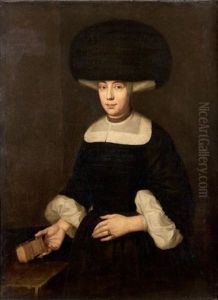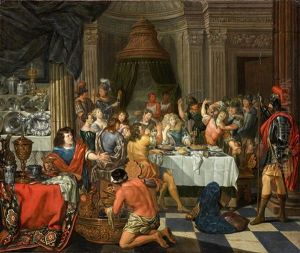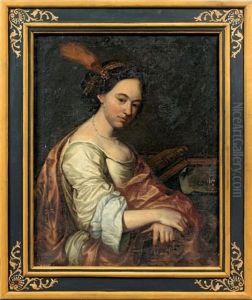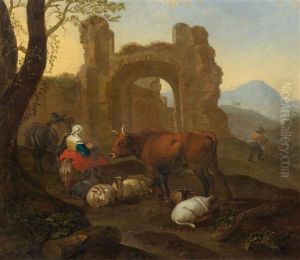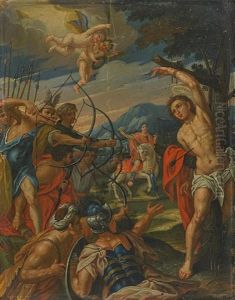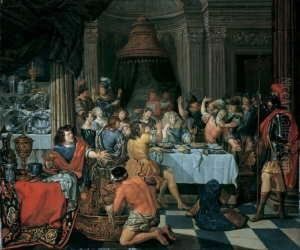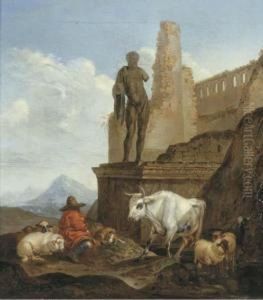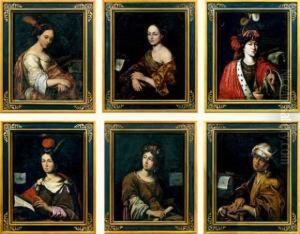Theodor Roos Paintings
Theodor Roos was a German Baroque painter who was born on September 14, 1638, in Wesel, Duchy of Cleves, which was then part of the Holy Roman Empire and is now in present-day Germany. He descended from a family of painters: his father, Johann Heinrich Roos, and his brothers, Philipp Peter and Johann Melchior, were also painters, which suggests that painting was a family tradition. Theodor Roos is particularly known for his portraits and animal paintings.
Theodor Roos began his artistic training under his father's tutelage before embarking on a journeyman's travels, which was a traditional part of an artist's education at the time. He traveled to the Netherlands and France, and these experiences exposed him to a variety of artistic styles and techniques, which he would later incorporate into his own work. Roos eventually settled in Frankfurt am Main, where he became a citizen and got married.
In Frankfurt, Roos established himself as a successful portrait painter, attracting a number of high-profile commissions. His portraits were known for their detailed representation of textures, such as fabrics and furs, and for the psychological depth he gave to his sitters' expressions. In addition to portraits, Roos was also adept at painting animals, particularly sheep and goats, which were often depicted in pastoral landscapes. These paintings reflected a keen observation of nature and a mastery of depicting animal anatomy.
Roos' reputation as a skilled painter led to his appointment as a court painter to Charles I Louis, Elector Palatine, in Heidelberg. This role significantly boosted Roos' career, and provided him with a steady stream of commissions and recognition. His work during this period is characterized by a mix of realism and the baroque grandeur that was popular in court circles.
Theodor Roos died on October 31, 1698, in Frankfurt am Main. His legacy is preserved in the works he left behind, which can be found in various museums and collections in Germany and beyond. Roos' contributions to the Baroque style and his influence on the tradition of animal painting in Germany have made him an important figure in the history of German art.
